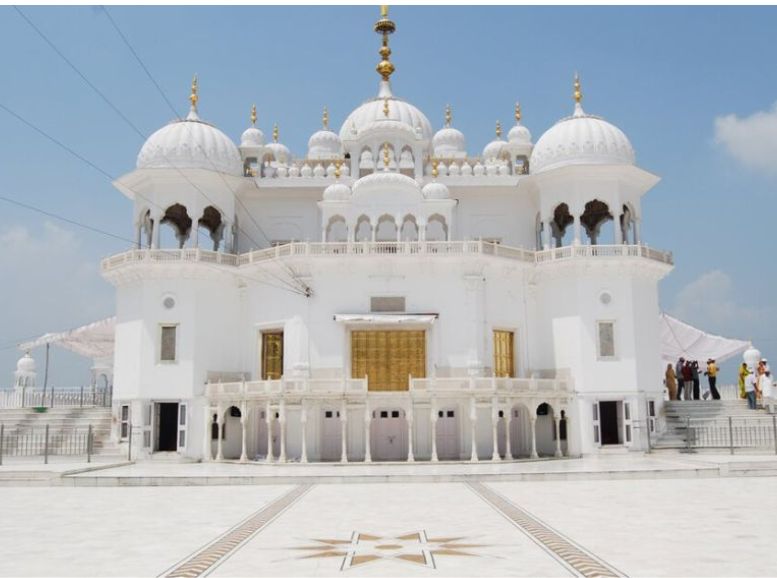Anandpur Sahib; Within the picturesque landscapes of Punjab, India, rests Anandpur Sahib, a city synonymous with spiritual bliss. Earning its title, “City of Bliss,” Anandpur Sahib holds immense significance for Sikhs worldwide. Here, the Khalsa, the Sikh warrior community, was born, and Sikh heritage flourishes. Steeped in tradition, bravery, and devotion, this ancient city beckons pilgrims and travelers for a journey of enlightenment and discovery.
Join us on a virtual pilgrimage as we explore the sacred grounds of Anandpur Sahib. We’ll delve into its rich history, vibrant culture, and enduring spirituality. From the tranquil waters of the Sutlej River to the majestic forts that grace the skyline, every corner of Anandpur Sahib resonates with echoes of the past, promising profound introspection and moments filled with reverence.
How to reach:
By Air: The nearest airport to Anandpur Sahib is Chandigarh Airport (IATA: IXC), located approximately 80 kilometers away. From the airport, you can hire a taxi or use other modes of local transportation to reach Anandpur Sahib.
By Train: Anandpur Sahib has its own railway station, Anandpur Sahib Railway Station (ANSB), which is well-connected to major cities like Delhi, Amritsar, and Chandigarh. You can take a train to Anandpur Sahib Railway Station and then hire a taxi or use local transportation to reach your destination.
By Road: Anandpur Sahib is well-connected by road to nearby cities and towns. You can reach Anandpur Sahib by bus, car, or taxi. Several state-run and private buses operate between Anandpur Sahib and cities like Chandigarh, Delhi, and Amritsar. The city is also accessible via national highways.
Self-Driving: If you prefer driving, you can reach Anandpur Sahib by car. The city is accessible via well-maintained roads, and driving offers the flexibility to explore nearby attractions at your own pace. Make sure to plan your route in advance and follow road safety guidelines.
Best time to visit:
Pleasant Weather (October – March):
- Embrace the Comfort: This period offers the most comfortable weather for sightseeing and outdoor activities with cool temperatures.
- Festivals Galore: Diwali (October/November) and Hola Mohalla (March) add a vibrant cultural touch to your visit.
Considerations: This may be the peak season, so expect larger crowds.
Fewer Crowds (April – June):
- Beat the Rush: If you prefer a quieter experience, summer might be suitable. Early mornings and evenings offer pleasant escapes from the heat.
- Embrace the Heat: Be prepared for hot and dry weather, which may not be ideal for extended outdoor activities.
Lush Landscapes (July – September):
- Nature’s Canvas: The monsoon transforms the landscape into a lush paradise, perfect for photographers.
- Embrace Flexibility: Prepare for occasional showers that might disrupt outdoor plans. Look for indoor activities or visit during breaks in the rain.
Attractions:
Exploring the Historical Roots: Anandpur Sahib
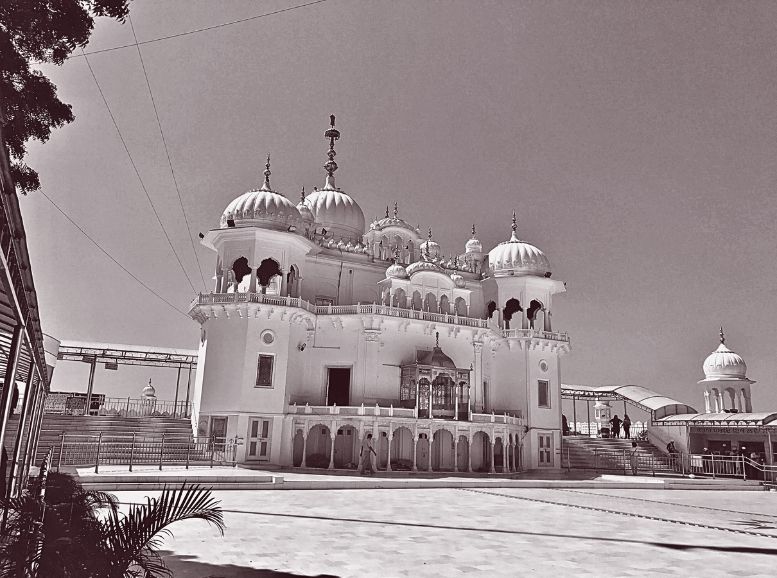
Founded by the ninth Sikh Guru, Guru Tegh Bahadur Ji, and nurtured by Guru Gobind Singh Ji, Anandpur Sahib stands as a testament to Sikhism’s rich history and legacy. The city flourished as a center for both spiritual and martial training, instilling the core Sikh values of courage, equality, and righteousness within its community. Visitors can delve into this history by exploring landmarks like Takht Sri Keshgarh Sahib, the site of the Khalsa inauguration, and the nearby Anandgarh Fort, a silent witness to countless battles and sacrifices.
Experiencing Vibrant Festivals:
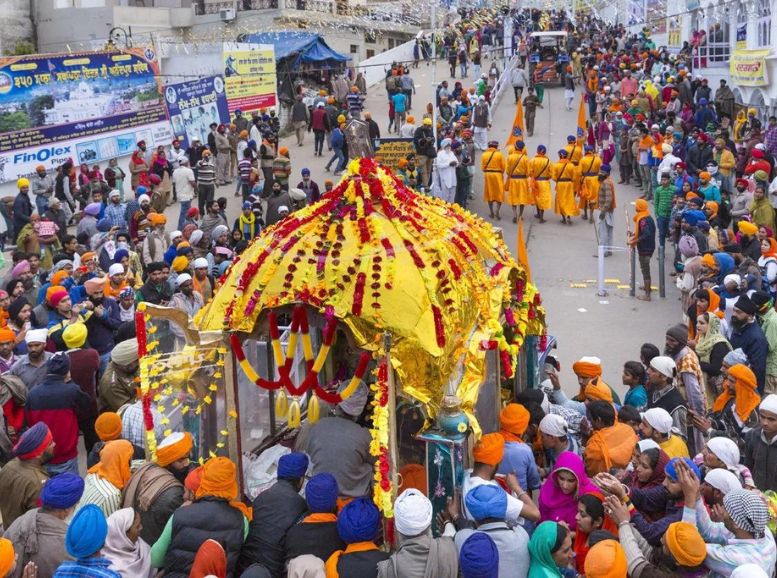
Transformed during festivals, Anandpur Sahib offers a vibrant immersion into the Sikh cultural tapestry. The annual Hola Mohalla explodes with fervor and zeal. Breathtaking displays of Gatka (Sikh martial arts) and Nagar Kirtan processions, electrifying parades with music and sacred hymns, showcase the martial spirit and unwavering faith of the community. Vaisakhi, commemorating the formation of the Khalsa, and Diwali, the festival of lights, bring communities together for joyous celebrations and introspective reflections.
Cultural Immersion and Hospitality:
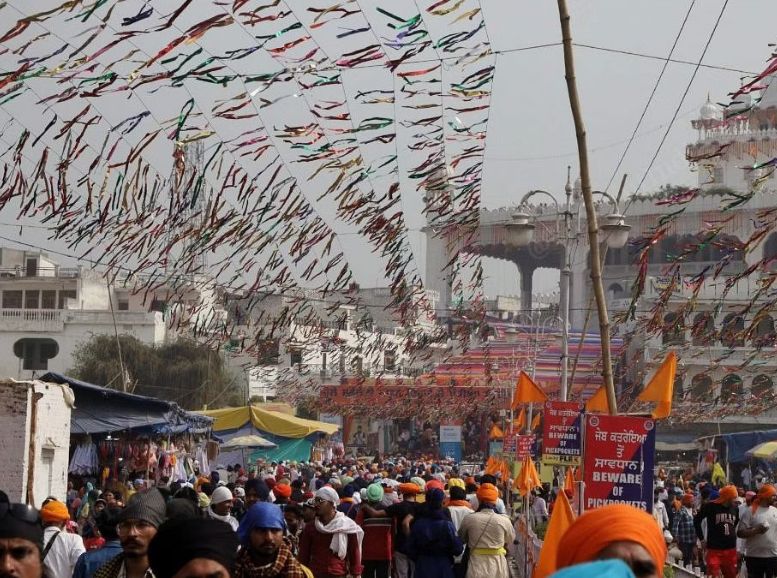
Hospitality is a cornerstone of Sikh culture, and visitors to Anandpur Sahib are welcomed with open arms and warm hearts. The langar, or community kitchen, serves delicious and wholesome vegetarian meals to all, irrespective of caste, creed, or religion, embodying the principles of equality and service. Engaging with locals, sharing stories over a communal meal, and participating in seva (selfless service) offer glimpses into the profound sense of community and compassion that define Sikhism.
Embracing Spiritual Serenity:
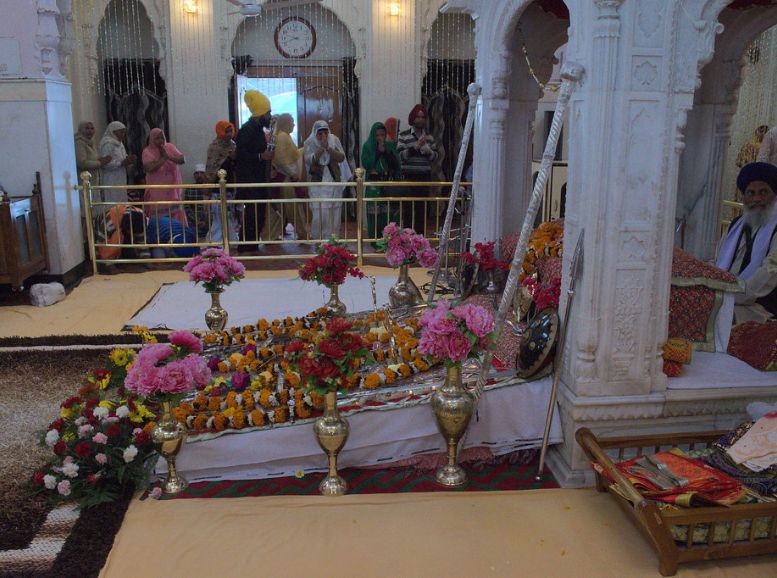
At the heart of Anandpur Sahib lies the Takht Sri Kesgarh Sahib, one of the five temporal seats of Sikh authority. Here, amidst the serene ambience and sacred surroundings, visitors can partake in prayers, meditation, and spiritual discourse. The melodic strains of Kirtan, hymns sung to the rhythmic beat of the tabla, fill the air as devotees immerse themselves in the divine teachings of Sikhism, finding solace and enlightenment in the presence of the Guru Granth Sahib.
Local experiences:
- Sri Anandpur Sahib Gurudwara: Begin your journey at the heart of the city, the sprawling Sri Anandpur Sahib Gurudwara complex. Witness daily rituals, listen to soul-stirring kirtans (hymns), and absorb the serene atmosphere.
- Hola Mohalla Festival (if visiting in March): If your travels coincide with March, don’t miss the electrifying Hola Mohalla festival. Witness exhilarating displays of Gatka martial arts, mock battles, and vibrant processions filled with music and poetry.
- Virasat-e-Khalsa Museum: Embark on a historical voyage at the Virasat-e-Khalsa Museum. Explore exhibits, artifacts, and multimedia presentations that unravel the evolution of Sikhism and the life of Guru Gobind Singh Ji, the tenth Sikh Guru.
- Local Delights: Wander through the charming streets lined with colorful shops selling religious items, handcrafted souvenirs, and local delicacies. Indulge in Amritsari kulcha, chole bhature, and lassi from enticing street food stalls.
- Rehras Sahib Prayers: Join the local community for the evening prayers (Rehras Sahib) at the gurudwara. Experience the tranquility as devotees gather to offer prayers and listen to sacred scriptures.
- Langar Seva: Participate in langar seva, volunteering at the gurudwara’s community kitchen. Prepare, serve, or clean utensils for the free meals offered to everyone, embracing the spirit of Sikhism’s egalitarian principles.
- Sutlej River: Visit the banks of the Sutlej River, considered sacred by many. Take a dip in its refreshing waters, a ritual believed to purify the soul. (Optional based on personal beliefs)
- Nearby Historical Sites: Venture beyond the city to explore the Bhakra Nangal Dam, an engineering marvel, and the Ropar Archaeological Museum for a deeper understanding of the region’s history and significance.
Travel tips:
- Dress Modestly: Show respect by covering your shoulders and knees when visiting gurudwaras and religious sites.
- Head Covering: Gurudwaras often provide scarves. Cover your head as a sign of respect.
- Shoe Etiquette: Remove your shoes before entering gurudwaras and other religious sites.
- Hydration & Snacks: The weather can be hot. Carry a water bottle and pack snacks for exploring.
- Festivals: Consider visiting during vibrant celebrations like Hola Mohalla or Gurpurab (birth anniversaries of Sikh Gurus).
- Accommodation: Book your stay in advance, especially during peak seasons and festivals. Opt for guesthouses, hotels, or homestays.
- Learn about Sikhism: Gaining knowledge about Sikhism will enhance your appreciation of the religious sites and rituals.
- Photography Restrictions: Respect restrictions on photography or videography within religious premises. Always ask for permission before taking photos.
- Security: Anandpur Sahib is generally safe, but stay vigilant with your belongings, especially in crowds.
- Sun Protection: Pack sunscreen, sunglasses, and a hat for protection during outdoor exploration.
- COVID-19: As of now, the pandemic might still be a concern. Adhere to local COVID-19 guidelines like mask-wearing and social distancing.
- Local Cuisine: Immerse yourself in Punjabi cuisine. Enjoy langar food at gurudwaras, savor Amritsari kulcha, and try refreshing lassi.
Conclusion:
Anandpur Sahib offers a unique opportunity to immerse yourself in the rich cultural and spiritual heritage of Sikhism. Whether you’re exploring the historic gurudwaras, participating in festivals like Hola Mohalla, or enjoying the local cuisine, Anandpur Sahib has much to offer. Remember to respect local customs, stay hydrated, and plan your visit in advance, especially during festivals.
For further assistance in planning your trip and discovering more about the attractions in Anandpur Sahib and beyond, you can visit the tour guide website Xplro.com. This platform provides comprehensive information, including travel tips, accommodation options, and insights into local experiences, ensuring you make the most of your journey to this sacred destination.
FAQ
- What makes Anandpur Sahib significant?
- Anandpur Sahib holds importance as a holy city in Sikhism, renowned as the birthplace of the Khalsa Panth by Guru Gobind Singh Ji in 1699.
- When is the ideal time to explore Anandpur Sahib?
- The optimal time for a visit is during festivities like Hola Mohalla or Gurpurab, usually occurring in March or April, although Anandpur Sahib is welcoming throughout the year.
- Are there specific attire guidelines for visiting gurudwaras?
- Yes, visitors are expected to cover their heads with scarves or head coverings, remove footwear upon entry, and dress modestly.
- What exactly is Hola Mohalla, and when does it take place?
- Hola Mohalla is a Sikh festival celebrated after Holi, featuring martial arts displays, simulated battles, and cultural performances. It typically falls in March.
- Can tourists participate in langar seva at the gurudwara?
- Absolutely, langar seva (community kitchen service) welcomes volunteers from all backgrounds to assist in meal preparation, serving, or utensil cleaning.
- **What local delicacies should one try in Anandpur Sahib?
- Some must-try local delicacies include the langar food served at gurudwaras, Amritsari kulcha, chole bhature, and refreshing lassi.
- Is photography allowed inside gurudwaras?
- It’s advisable to seek permission before capturing photographs inside gurudwaras, as certain places may have restrictions on photography or videography.
- What nearby attractions can visitors explore in Anandpur Sahib?
- Nearby attractions include the Virasat-e-Khalsa Museum, Bhakra Nangal Dam, and the Ropar archaeological museum.
- How can one book accommodation in Anandpur Sahib?
- Accommodation options such as guesthouses, hotels, and homestays can be booked online or through travel agencies.
- Is Anandpur Sahib considered safe for tourists?
- While generally safe, visitors are advised to exercise caution with their belongings and adhere to local guidelines during their stay.
- What COVID-19 precautions should visitors observe while visiting?
- It’s important to adhere to local COVID-19 guidelines, including wearing masks and practicing social distancing where necessary.
- Where can visitors find additional information about visiting Anandpur Sahib?
- For further details and trip planning, visitors can explore tour guide websites like Xplro.com, which offer insights into local experiences, accommodation options, and travel tips.




